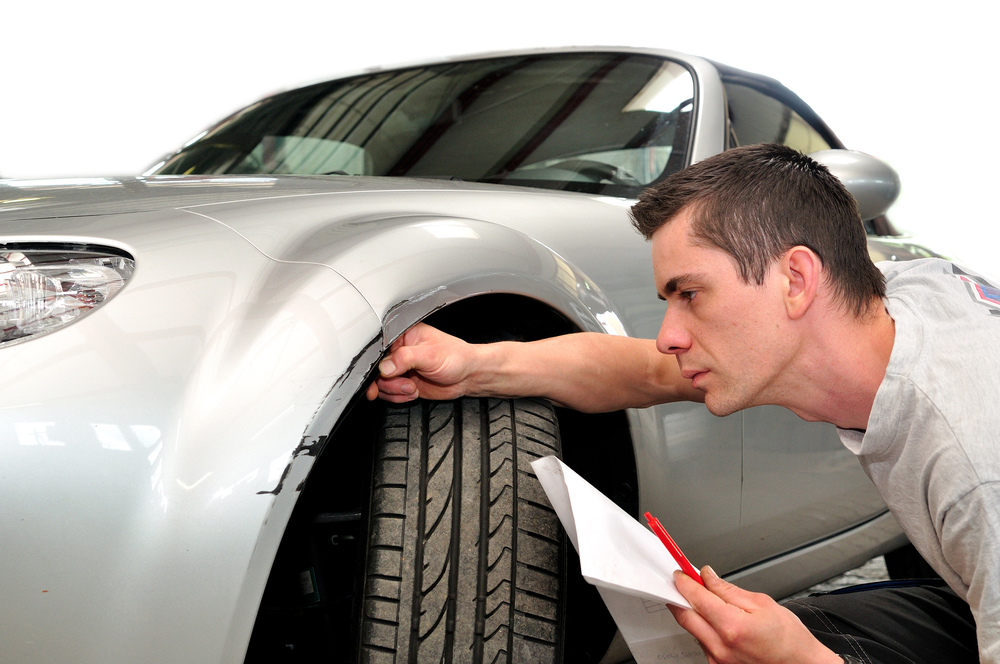How to Check a Used Car for Previous Accidents
Valerie Raskovic

It's usually a good idea to examine the vehicle's history before buying a secondhand automobile. That is one of the ways you can make sure you're not being taken advantage of.
If you need new wheels but don't have thousands of dollars to spend on something new off the lot, buying a used automobile is a great alternative. Unfortunately, it’s easy to get duped when you buy a used car. We have all heard stories of people being taken advantage of in the purchase of an automobile. It is important that you do your research prior to the purchase of the vehicle.
How can you safeguard yourself while purchasing a secondhand vehicle? How can you find out about prior incidents that may obstruct your ability to drive safely? Thankfully, there are multiple ways.
Self-Check the Car
Some damage done to a car can be spotted by even someone who isn’t very well-versed in automobiles. A novice can tell if an automobile has been in an accident or not. All you have to do is check over the automobile, ideally in daylight, for dents and scrapes that are easily visible. These kinds of defects may only be seen if the automobile has recently been cleaned, which is generally the case at dealerships. After all, the car must create a strong first impression.
Running your fingertips along the essential places might be helpful if you're unsure of any potential damage. Rust, as well as unevenly painted regions, can be discovered this way. Looking at the rubber seals on the doors, around the trunk, and on the hood might also reveal whether a car has been repainted. There should be no paint splatters evident. If a place has been filled, you may detect it by passing a magnet over the car's body—metal attracts a magnet, whereas putty does not.
The gap inspection should be your next step. The size of the gap is one sign of an accident. The distances between nearby components, such as the engine compartment lid and the fender, are measured in millimeters. A regular gap dimension is considered an indication of excellence in automobile engineering. The gap proportions are generally not consistent in the event of a damaged car. While this is probably not feasible for most people, you can still take a look at these and compare them with other vehicles if able.
Of course, the best way to examine a car is to drive it. The accident exam includes more than just a visual assessment. The test drive is the final step. You should pay attention to the steering behavior while doing so. On a straight length of road, if you take your hands off the steering wheel, it should continue to travel straight for a time. You should inquire as to why the car pulls in one direction or the other.
Another method to test is to see how smoothly the automobile door closes. It should shut quietly and without much effort. If it doesn't, it might be a sign of an accident, since the door may have warped or been replaced after a collision.
VINCheckUp
If you're still not sure, get a VinCheckUp vehicle history report, which outlines all you need to know about the car. The database, which is updated regularly with fresh data. The only choice in this situation is to get the car inspected by a professional.
If you are buying a car in North America or most of Europe, it really makes a lot of sense to just use VINCHECKUP whenever you are looking into making a purchase. This will give you a full, accurate, reliable report on the part of this car and will shine a light on any skeletons in the closet.
Use VINCheck
VINCheck, a website run by the National Insurance Crime Bureau, offers information about insurance claims like flood damage and thefts. It is important to remember that although a vehicle history report can provide you with invaluable information such as previous events like accidents, theft, taxi, and commercial use, it is not a substitute for a good old-fashioned vehicle pre purchase inspection.
If you know the vehicle's make, model, and year, you'll almost definitely get a decent, general report on it, including information on vehicle trim, engine size, and amenities, as well as a useful evaluation that explains the car's advantages and disadvantages. You'll still need the VIN number if you want a history report on a specific automobile.
On the site's main page, type in that number, and you'll obtain a very beautiful history report in seconds, letting you know whether the car you wish to buy has any accident, junk, salvage, or other insurance records. The report also includes information on the number of recalls connected with all vehicles of that make, model, and year, as well as information on where they are made and even the body type.
Ask the Owner
If you're buying directly from the owner, the most basic way could be to simply ask him or her! The majority of the time, the owners are not afraid to tell the truth about their vehicles. On the other side, you should be a knowledgeable client who doesn't believe the owner's claims without checking the vehicle for yourself.
Check the Paint
You may also look at the paint to see whether a secondhand automobile has been in an accident. If any of the car's panels have been repainted, you should inquire about the history with the owner or dealer. Make sure you check the automobile in direct sunshine to readily detect a repainted panel. When comparing the repainted panel to other panels, you'll notice the uneven filling or slight variations in the paint. Repainted exterior surfaces may indicate interior deterioration that requires immediate attention.
Read more articles

